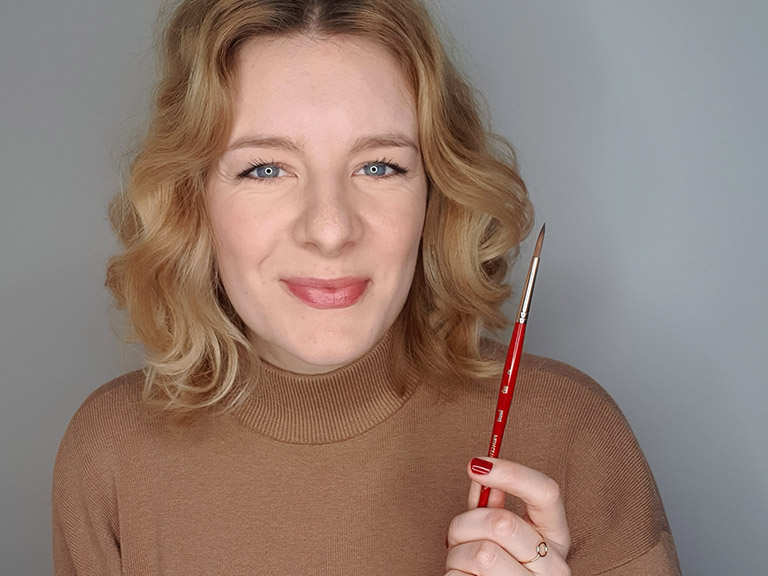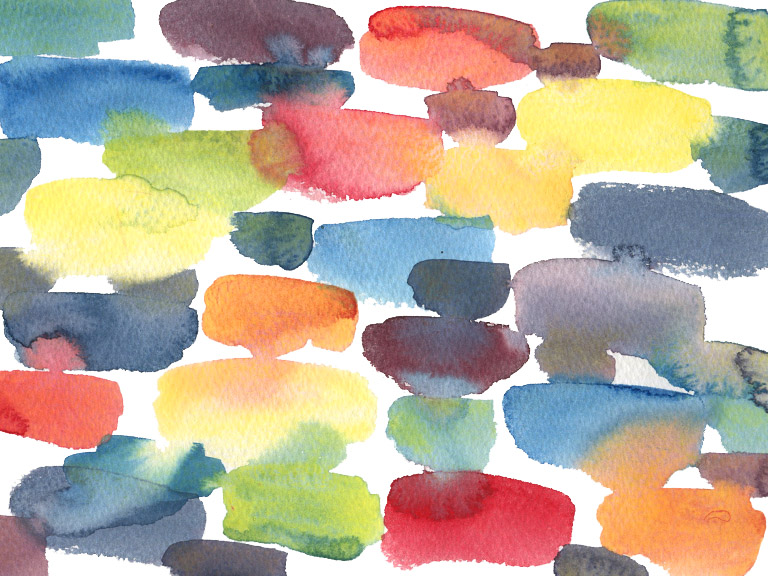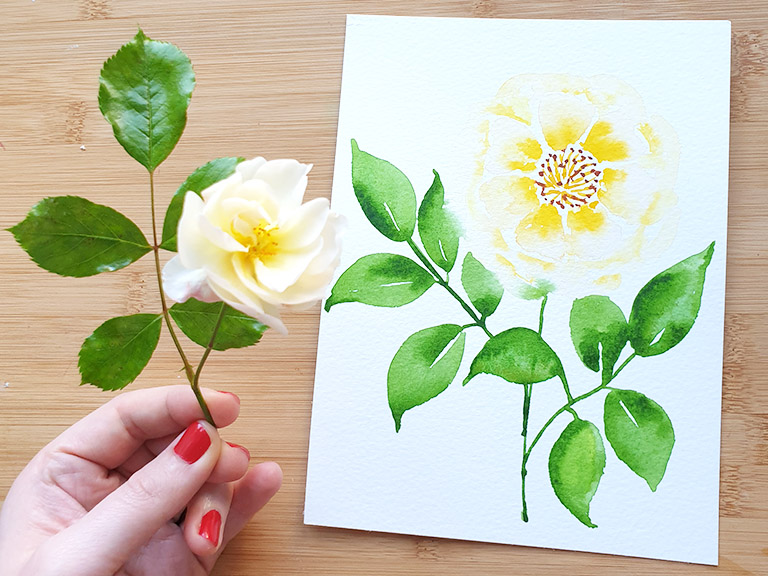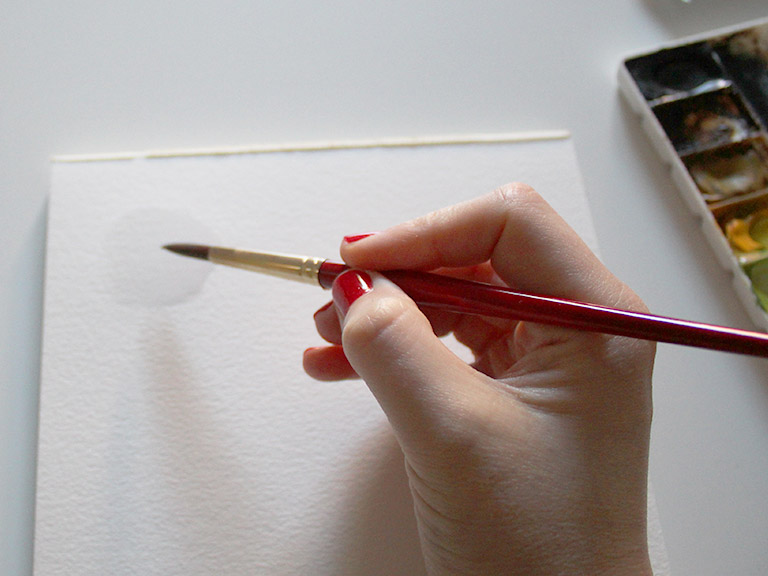We all know the feeling – you sit down to create and suddenly your mind is blank. Totally empty. You’ve been looking forward to this moment all day and now it’s here, all your ideas are gone. You have absolutely no idea what to paint or draw.
When I turned my art hobby into a business alongside my corporate job, I didn’t have time to waste. If I had a free hour to paint, I couldn’t spend it staring at a blank page wondering what to paint.
And the same question kept coming up over and over again – where do people find inspiration? Should I visit some magical place? Do we just sit around waiting for it to happen, like a bolt of lightning?
I started researching how we create and the process of distilling ideas and discovered that it’s not a spark of electricity but actually a simple process. I built it into a framework that I now use in my creative practice to generate hundreds of painting ideas.
Here’s my framework for finding creative inspiration anywhere and creating more in less time.

Start with a brainstorm
Grab yourself some sheets of paper and pens and let’s start brainstorming! What are your favourite things? Start a list of everything you love, broken down by category.
- Themes
- Subjects
- Places
- Colours
- Techniques
This is your starter list, throw everything at it and we can narrow down later. Here’s some of mine:
- Themes: Florals, patterns, summer, botanicals
- Subjects: Leaves, roses, sunsets, beaches, fruit
- Places: the beach, France, London, an overgrown riverbank
- Colours: red, lemon yellow, Prussian blue, pastel pink
- Techniques: wet on wet watercolour, abstract style, masking fluid
Identify your favourite work
Look back at your previous work – what are your favourite pieces? What subjects and styles do they take? Note down any consistent themes as you flick through your sketchbooks or Instagram grid.
Now do the same with other artists you admire. What do you love about their work – is it the colours, the subjects? Is it a particular effect – analyse your favourite parts and add all of this to your lists.

Create an inspiration box
Now begin building a box with ideas. Look for reference photos online, but don’t take images of other artists’ work! It’s important that your inspiration is not corrupted by their vision – use photographs or real-life objects to study if possible.
It’s not just photos you need. Create a collection of objects that appeal to you. It could be fabrics, found objects, leaves and flowers, unusual wine glasses, old postcards. Try visiting a market and look for colours, textures and shapes that catch your eye.
Get out into nature
Head outside for a walk. It could be a local park or hiking spot – it just needs to be open, beautiful and something different. Again, you’re looking for things that catch your eye. Great views, weird clouds, unusual leaves, other people and their cute dogs! Take your own reference photos of anything you see.
Bring it all back
Get all of your inspiration back home and lay it out on the floor. Print any photos if possible so you can see it all side by side.
Now go through the lists and highlight the things you’re most excited about. What is really sparking ideas for you? Eliminate anything that isn’t firing ideas for you.
If you’re struggling, ask yourself if you could create work on this subject or in that colour for 100 days in a row? That always seems to sharpen your decisive skills!

Make preliminary sketches
Once you have a theme, it’s time to start creating! Fill a sketchbook or sheet of paper with miniatures, preliminary works and doodles on your theme. Try creating the same subject in 10 different ways, using different colours, materials or techniques.
At this point you’re refining ideas and building towards a final piece or collection of pieces. Your inspiration may lead you in a clear direction or pull in lots of directions – that’s perfectly normal!
Repeat the process whenever you need
You should keep doing this creative practice regularly to keep new ideas coming in. Try keeping a notebook by your bed so you can note down any ideas that come to you in the night.
Make notes each time you see work you admire – what does it spark for you and why do you love it? Visit galleries and museums to be inspired by different periods and styles. And travel as much as possible, even if it’s just the next town. The more you see, the more inspired you’ll be!
Top tip!
Remember, inspiration will not hit you as you’re staring at a blank piece of paper. It’s not going to come to you – you have to seek it out!
This roadmap process involves identifying what you love, refining your ideas and playing with your creativity in different ways, and I hope it will give you the keys to building a long list of ideas that get your creative juices flowing.
With this framework, you should be able to generate ideas to keep you creating every day. What techniques work for you to find creative inspiration?
More creative advice
Download my free watercolour supply guide
Feeling overwhelmed and confused by watercolour paints, papers and brushes? Download my free guide filled with insider info, including a list of good supplies for every budget, and my complete supply list!
